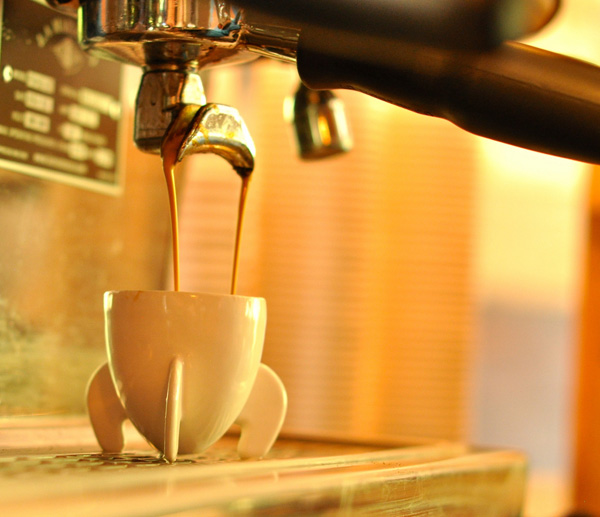Love espresso and choose a mellow and heavy life
Love espresso, its mellow, its thick, its exquisite, all fascinating. Choose espresso, choose a mellow and heavy life.
Coffee has long been synonymous with elegance since the Middle Ages. The shiny coffee machine, elegant and beautiful tablecloth, exquisite coffee cups and hot coffee have become classic scenes to show the elegant temperament of upper-class society in movies. Coffee is not only a taste, but also a temperament and a kind of life.
There are many kinds of coffee, whether it is a mocha with a sour taste in lubrication, a lady's temperament, or a blue mountain that perfectly matches the sweet, sour and bitter taste of coffee, or cappuccino with lubricated foam without losing the full-bodied flavor of espresso, are fascinating. However, what I love most is the mellow espresso.

Espresso is fragrant and mellow, and its strongest taste is desirable, but what really fascinates me is more than that: first, the process of making espresso is delicate and simple, injecting boiled water into the coffee pot and using steam pressure to pass the hot water through the very fine coffee powder, thus absorbing the strongest taste of the coffee and finally dripping it into the following cup to become a mellow coffee. Just as life is brewing, the more it goes through the experience of time and the polish of time, the more mellow and heavy it will be to recall life in its octogenarian. Like veterans who show off their wounds to recruits, only pain can hold up the weight of life. Second, although espresso is not like other coffees and requires a tedious process, it is this purity and simplicity that makes it the best companion for people. After work, they drink up the coffee at hand when they are tired. The simplicity of espresso has made it a classic in people's minds. In addition, it is precisely because of the thickness of espresso that it can become the foundation of other coffee drinks such as latte, cappuccino and Machi. Only by laying a solid and solid foundation can we achieve an unforgettable riotous taste without losing its original taste. This is also the case in life, if you want to dye life with its own beautiful color, only if you are steadfast and willing to work and create a strong heart, can you not be tarnished by other colors, maintain the color of your own soul in a mixed society, and become the vision of others.
Love espresso, its mellow, its thick, its exquisite, all fascinating. Choose espresso, choose a mellow and heavy life.
Important Notice :
前街咖啡 FrontStreet Coffee has moved to new addredd:
FrontStreet Coffee Address: 315,Donghua East Road,GuangZhou
Tel:020 38364473
- Prev

The Magic Journey of Coffee beans A coffee bean becomes a drop of coffee
Turning a coffee bean into a drop of coffee is very difficult and long, and its journey is extremely tortuous. Arabica beans and Robosta beans are two kinds of coffee beans in the world in a broad sense. At first, Arabs chewed coffee beans to chew their juices to feel the charm of coffee. Later, Arabs began to roast coffee beans and slowly evolved into
- Next

A cafe in the depths of the alley.
Taste a cup of espresso, relax the mind, let the dream set sail again, in the sea of books, in small talk and laughter, find yourself who once had unlimited dreams and infinite energy. Open a small shop, filled with fragrant coffee, smell a little sweet, with a piece of attractive romantic Tira Misu or a light fresh matcha cake to add a little bit to the whole afternoon
Related
- Beginners will see the "Coffee pull flower" guide!
- What is the difference between ice blog purified milk and ordinary milk coffee?
- Why is the Philippines the largest producer of crops in Liberia?
- For coffee extraction, should the fine powder be retained?
- How does extracted espresso fill pressed powder? How much strength does it take to press the powder?
- How to make jasmine cold extract coffee? Is the jasmine + latte good?
- Will this little toy really make the coffee taste better? How does Lily Drip affect coffee extraction?
- Will the action of slapping the filter cup also affect coffee extraction?
- What's the difference between powder-to-water ratio and powder-to-liquid ratio?
- What is the Ethiopian local species? What does it have to do with Heirloom native species?

